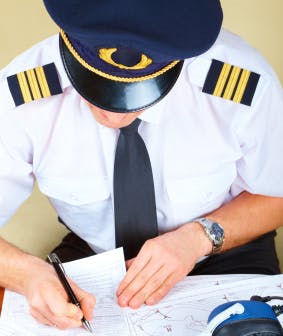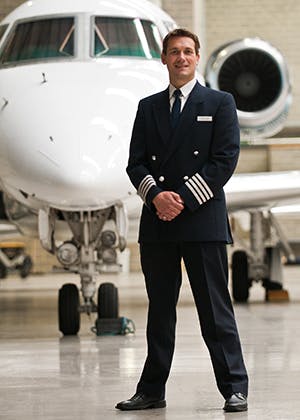EU to standardise airline pilots’ working hours across Europe

Updated 14th October 2013
Last week the EU’s plan for standardising pilots’ working hours across Europe was passed. This follows an earlier rejection of the proposals by the Commission’s Transport Committee and has seen a war of words erupting with UK pilots’ union BALPA.
The plans have been robustly criticised by opponents including BALPA, who believe the new rules will lead to greater risk of UK pilots falling asleep at the controls. They argue that the changes will result in British aircrews being awake for up to 22 hours before a landing. And say that crews can now be asked to work up to seven consecutive 05.00hrs starts, rather than the previous three.
Prior to the new rules BALPA say that Britain had the safest skies in Europe because of tighter controls on pilots’ working hours. However their arguments have been dismissed by the EU who described them as “false and irresponsible”.
With airline pilot jobs becoming more and more standardised, the differences in the role of the airline pilot and private jet pilot are becoming more apparent.
An airline career is still the tried and tested career path for newly qualified pilots or those leaving the military (the majority of my old RAF friends have gone down this path).
But it is certainly a very different role these days.
Airline pilot versus private jet pilot
The success of low cost airlines has resulted in a seismic shift in the way airlines look at their margins. Their pilots are an expensive commodity, so using their time as efficiently as possible has become an important focus.
Airlines ensure that their aircraft are on the ground for as little time as possible, with the new crew arriving just 30 minutes before take-off, while the passengers have been waiting at the airport for two hours or more.
Ironically this is almost a direct reversal of the arrival timings for private jet crew and passengers: The private jet pilot will generally get to the airport around 2 hours beforehand. He or she can then check over the route and make sure the aircraft is ready for the passengers – who arrive just before take-off. These pre-flight tasks are all taken care off by a Operations department for airlines, not part of the pilot’s role.
The role in the air is very different too. Of course both airline and private jet pilot are ultimately in charge of the aircraft’s technical performance and safety. But the private jet pilot is also pivotal to customer service.
They are a key presence to the passengers, greeting them at the airport and welcoming them onboard. And the cockpit is open to the cabin, so they are very much visible during the flight. As there are not always cabin crew on private jet flights, the pilot or co-pilot will even serve drinks and catering sometimes. It’s a hands-on role!
By contrast, the airline pilot is rarely seen by passengers now, most will only experience them as a voice over the loudspeaker. Obviously there are important security reasons for this, but it does mean the flight deck is very much a closed off space. The pilot is not a visible presence to passengers – or even the other flight crew for most of the time.
Last year we surveyed hundreds of pilots across the aviation spectrum, to find out how they felt about their role and their motivations for flying. There were some interesting contrasts between airline and private jet pilots.
Private jet pilots demonstrated greater enjoyment in their roles, with 56% saying they found their job “very stimulating”, versus just 25% of airline pilots. They also said they had more operational control. See full results of the PrivateFly Pilot Survey.

Why aren’t more pilots choosing private aviation?
Despite this greater job satisfaction and autonomy it’s still clear that the private aviation is not considered by many pilots as a career route.
It’s partly a matter of remuneration. While job satisfaction is high on anyone’s list of priorities (and pilots are clearly motivated by a passion for flying, rather than purely financial gain), our survey found that private jet pilots earn less than their airline equivalents.
They also receive far fewer employee benefits such as private medical cover or a pension scheme. And of course the subsidised flights offered to airline pilots and their families is a very big incentive for many.
The life of a pilot is also one that takes them away from home for extended periods. So the predictability of airline schedules can be more appealing, when it comes to balancing work and home. Private jet pilots are often asked to work to a more varied and unpredictable timetable, which while attractive to some, can make life more difficult for those with families.
Private jet pilots are also often called upon to fund their own training now, which obviously isn’t attractive to many.
So while private jet pilots do seem to enjoy their jobs more than airline pilots, the barriers are clear. A very real problem lies ahead with pilot shortages – across all aviation sectors – if demand for air travel grows as expected. So private jet companies need to do more to compete with airlines to recruit new talent.


